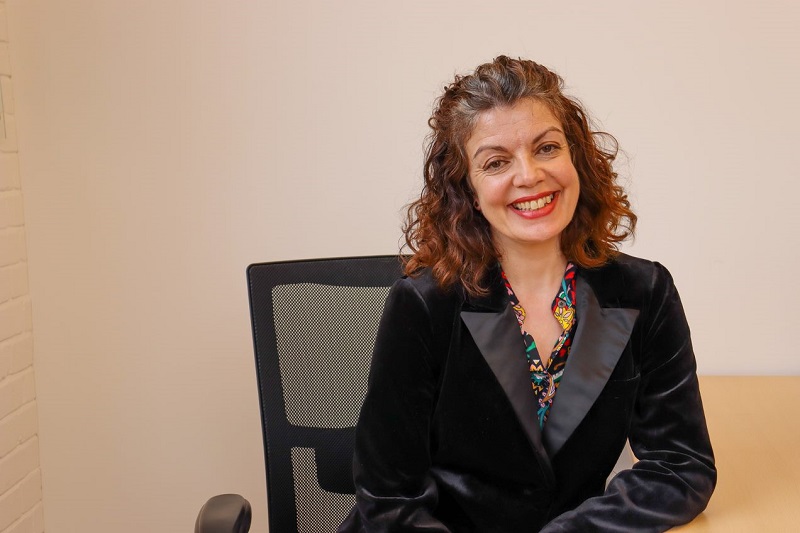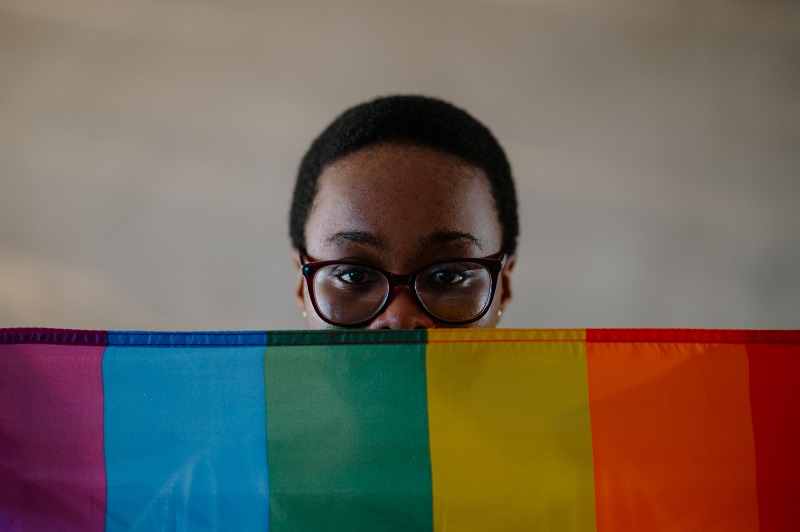Diane, can you explain why good intentions around disability inclusion are not enough?
Recent ‘Everyone Economy’ research by the CMI shows that there can be a huge perception-to-action gap between the views of senior leaders and managers around what is happening on disability inclusion and the day-to-day realities experienced by employees within the organisation. Tangible actions are often what make a difference at an individual level.
These actions include things like making sure that disabled employees have the workplace adjustments they need – a topic we are looking at through our Great Big Workplace Adjustments Survey work sponsored by Microlink. Someone is less likely to ask for adjustments if they know there is a long waiting time or are afraid of how their manager will react.
Our adjustments research from 2019 found that 34% of disabled employees who could have benefited from an adjustment hadn’t asked for one because they were afraid their manager would treat them differently if they did. Line manager confidence is key – you can have the best policies in the world. Still, they live or die on the relationship between an individual and their manager and the trust on both sides to have a human conversation about the support that may be needed.
What do you think are the common reasons businesses fail to turn their talking about diversity into actions, especially regarding disability inclusion?
Very few businesses would say they don’t want to improve inclusion, but turning words into a reality can be difficult. The pressure to get it right in every area of diversity can lead to a diversity hierarchy which can see disability being placed at the bottom of the list.
The broad range of conditions and experiences covered by the term ‘disability’ can make it hard for businesses to know where to start. There is also fear about the repercussions of getting things wrong around disability, which can result in inaction.
We know, for example, that some businesses avoid discussing disability with employees and customers because they have concerns about using language which may offend or even lead to legal action. It is important that businesses take steps to use the language that works for everyone, but they can only do that if they engage their disabled employees and customers in the conversation.
Having a senior leader or manager drive an organisation’s work around disability inclusion often results in more tangible actions, particularly if the individual has personal experience of disability and can share their own story. It is about motivation and insight but also being in a position to make real change happen.
How can businesses ensure that their efforts to promote disability inclusion are effective and sustainable?
It’s important to raise awareness and build understanding that disability inclusion is not just about doing the right thing; it’s good for business too. We see time and time again that diverse teams are more innovative, creative, and productive and create better products and services that meet the needs of all customers. In a climate of skills shortages, this is a narrative about talent. That’s critical in moving disability inclusion from a “nice to do” to a business imperative.
Senior leadership is key in driving change and setting out “what matters round here”, as is involving your people. I often say that we “don’t know what we don’t know”, and the way to design out barriers is to put disability inclusion at the heart of everything you do and involve people with as wide a range of lived experiences as possible. Designing inclusively – whether that’s premises, policies or processes – is much cheaper and easier than retrofitting.
It’s also important to prioritise. Our Disability Smart Framework, for example, sets out ten areas across the business that are critical in providing an inclusive experience for disabled employees and customers. But focusing on all ten areas at once will likely be overwhelming and frustrating! Instead, pick a couple of areas where you have the greatest need and can make the biggest impact. This will also help raise awareness of what’s possible and motivate those in other areas to get on board.
Could you share some examples of businesses that have successfully implemented tangible actions to promote disability inclusion, and what lessons can be learned from their experiences?
GSK won our Disability Smart Workplace Adjustments Award in 2021 for its work to create a self-serve system which auto-approves requests for assistive technology. The system is built on trust. Employees are not required to demonstrate their disability or condition to access support. Instead, the emphasis is on productivity and supporting everyone to thrive. Adjustments are also offered to all new hires in their job offer letter. The satisfaction scores for the service are outstanding.
Also, global recruitment firm Oliver James won our recruitment award. Oliver James created a unique recruitment service largely comprised of recruiters living with a disability to attract and place disabled talent with great results. Alongside this, they worked with local partners to increase understanding of the value of a diverse workforce, recognising the importance of culture change.
What role do you think the Disability Smart Awards can play in encouraging businesses to take tangible actions towards disability inclusion?
The Disability Smart Awards are all about sharing evidence and learnings from real-life projects that have had a positive impact on disabled people’s lives and which have involved disabled people throughout. The awards also challenge organisations to rethink what is possible regarding disability inclusion by promoting the work of teams and individuals who have developed new approaches with clear results.
We have been very impressed by the standard and number of entries this year. We have had more entries than ever, and finalists range from start-ups and small local businesses to national charities and global brands.
We are looking for projects that have made that tangible difference and can be scaled up – even if they have started small. We look forward to announcing the award winners at the ceremony on 27 April and sharing their stories. The event will be live-streamed, and everyone is invited to register to attend.
How can businesses create a culture of inclusivity and encourage their employees to embrace and champion disability inclusion?
Sometimes the term ‘disability’ can be a barrier in itself. Many people do not understand the sheer breadth of the term and what it covers. Most stories about disability in the media are illustrated with images of wheelchair users, for example. People may not realise that over 90% of disabilities are not immediately visible – and that they are almost certainly already working alongside many more disabled people than they realise. Many people don’t identify with the term “disabled” but may still come under the Equality Act definition of disability.
At the end of the day, workplace disability inclusion is about recruiting and retaining talent and ensuring all employees have what they need to be happy and productive in their roles. Businesses are far more likely to create an inclusive culture if they approach disability inclusion in this way.
In your opinion, what are some of the key challenges that businesses may face when trying to implement tangible actions for disability inclusion, and how can they overcome these challenges?
There are two key challenges: systemic and cultural. The theory may be straightforward, but businesses often grapple with legacy IT systems that don’t support assistive technology or work with other adjustments or an inaccessible physical estate (offices or other premises) that need a lot of time and budget to change. That’s why an inclusive design approach involving all stakeholders is so important; for example, involving DE&I or HR teams and IT and procurement teams when designing a new recruitment portal.
By involving stakeholders in designing and testing systems in the design phase, barriers – such as algorithms that automatically sift out candidates without a certain qualification or years of experience or AI with built-in bias – can be designed out. This is often compounded by disability inclusion not sitting in one budget area, so actions are sporadic rather than joined up.
Culturally, line manager confidence and ensuring a consistent experience for all disabled colleagues can take a long time to build. Ongoing messaging and cultural change programmes highlighting the importance of disability inclusion, backed up by practical support (such as knowing where to go to get a workplace adjustment), are key.
What advice would you give to businesses that are just starting their journey towards disability inclusion, and how can they ensure that they are moving in the right direction?
Businesses are often unsure where to start, particularly when you consider that many see disability as the aspect of DE&I that is too difficult or sensitive to tackle. We’ve created our free ‘Disability Essentials’ range of materials to support businesses just starting in this space. For our Members, we’ve also created a ‘Getting Started’ toolkit, supported by Lloyds Banking Group, to help businesses work out what they are doing well, where they can improve, and their next steps.
Finally, what do you think the future of disability inclusion in the workplace looks like, and what steps do businesses need to take to ensure they are prepared for it?
Pre Covid, working from home was the most frequently requested workplace adjustment, yet many businesses were not prepared to offer it. That changed overnight, and three years on, we are seeing lasting changes in working patterns and expectations of what work means and where it is done.
Businesses are also recognising that this is about talent; skills shortages, particularly post-Brexit, have contributed to this and those twin drivers – working differently and attracting talent – have the potential to create lasting change.
I hope, too, that we are seeing a younger generation of disabled talent who is not prepared to compromise and who will actively seek inclusive organisations to work for.
To access that talent, businesses need to understand where they have barriers to inclusion – from their attraction strategy to their physical estate. They need to create a plan to tackle those barriers and communicate them. The journey to becoming truly Disability-Smart may take time, but the results will be more than worth it.









